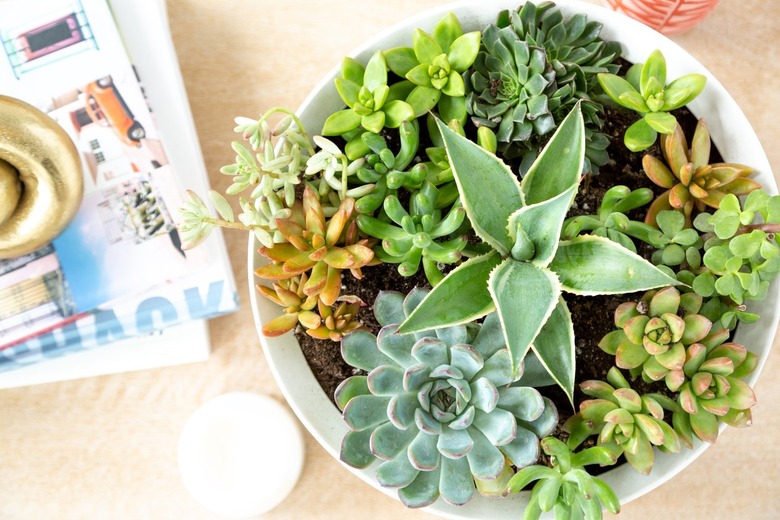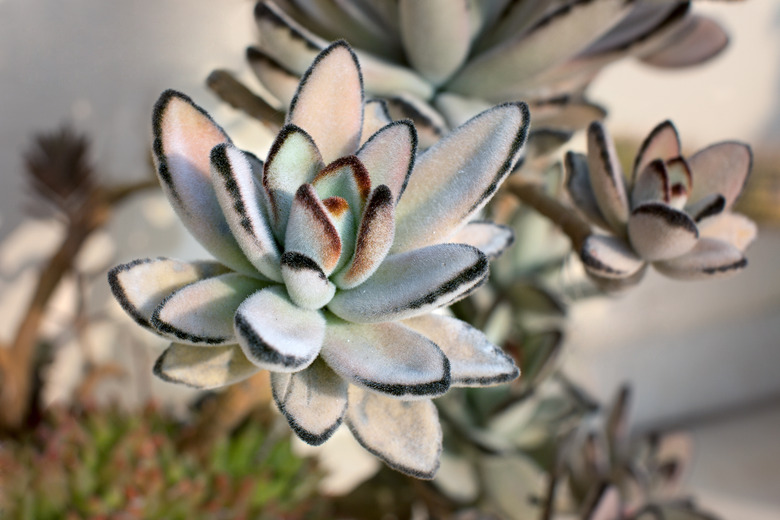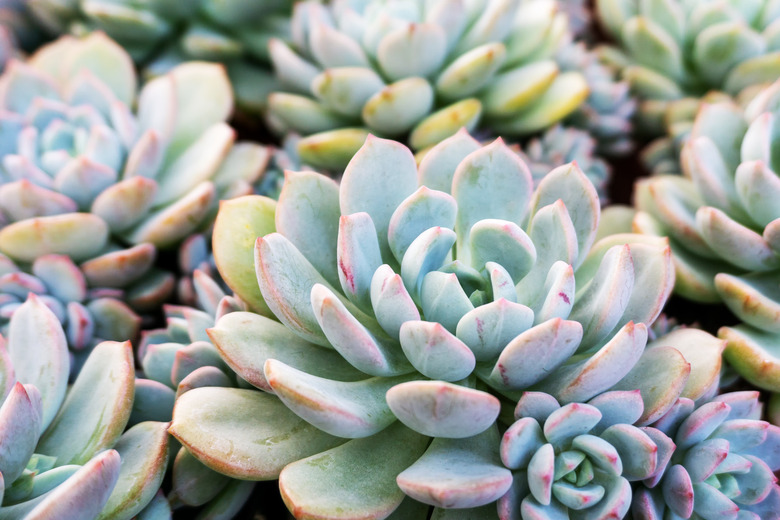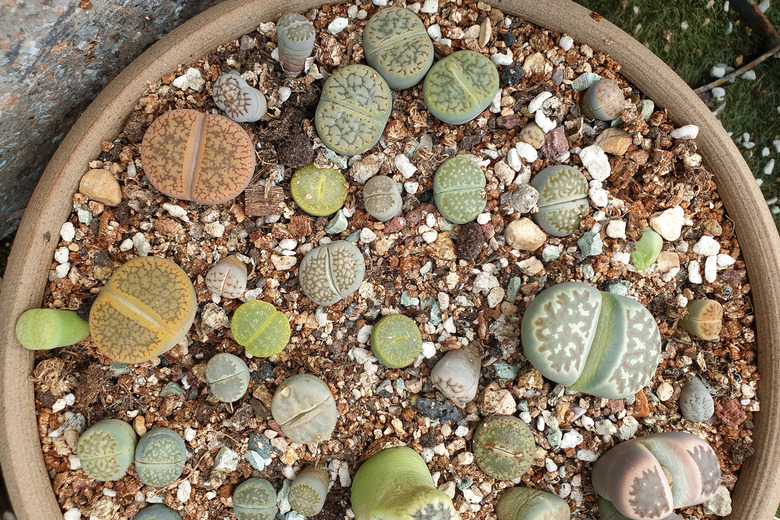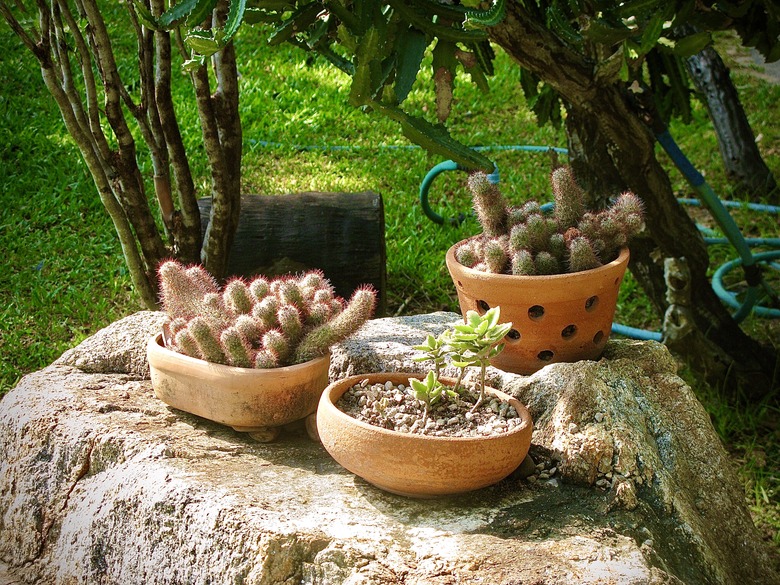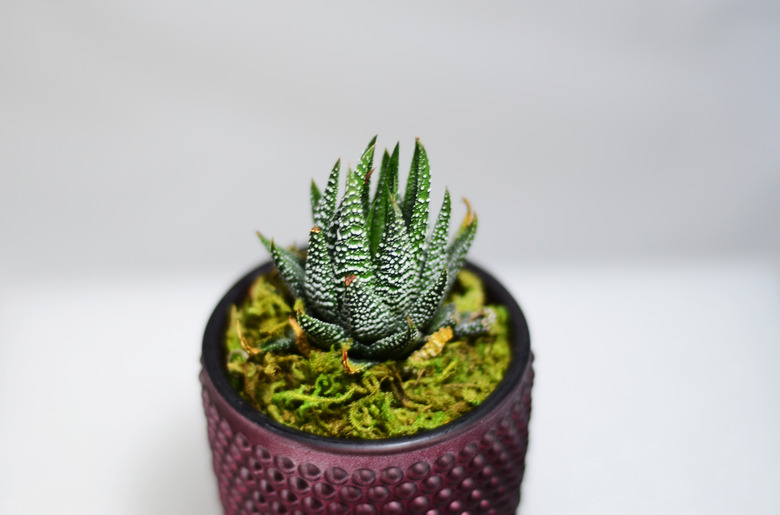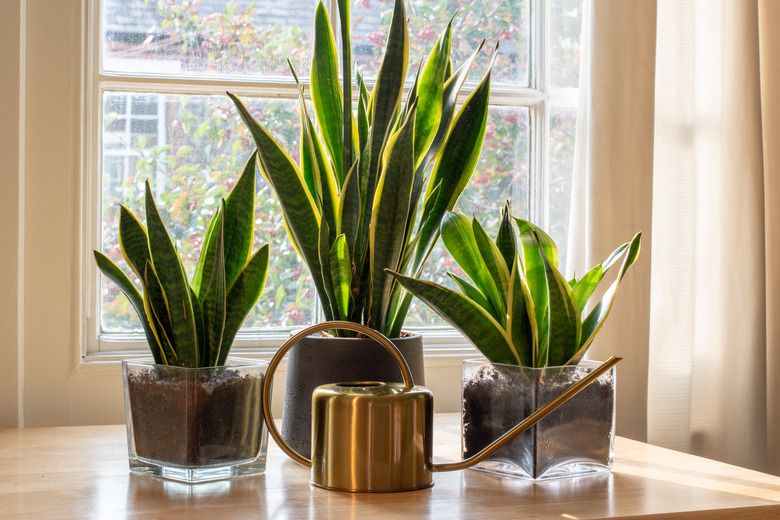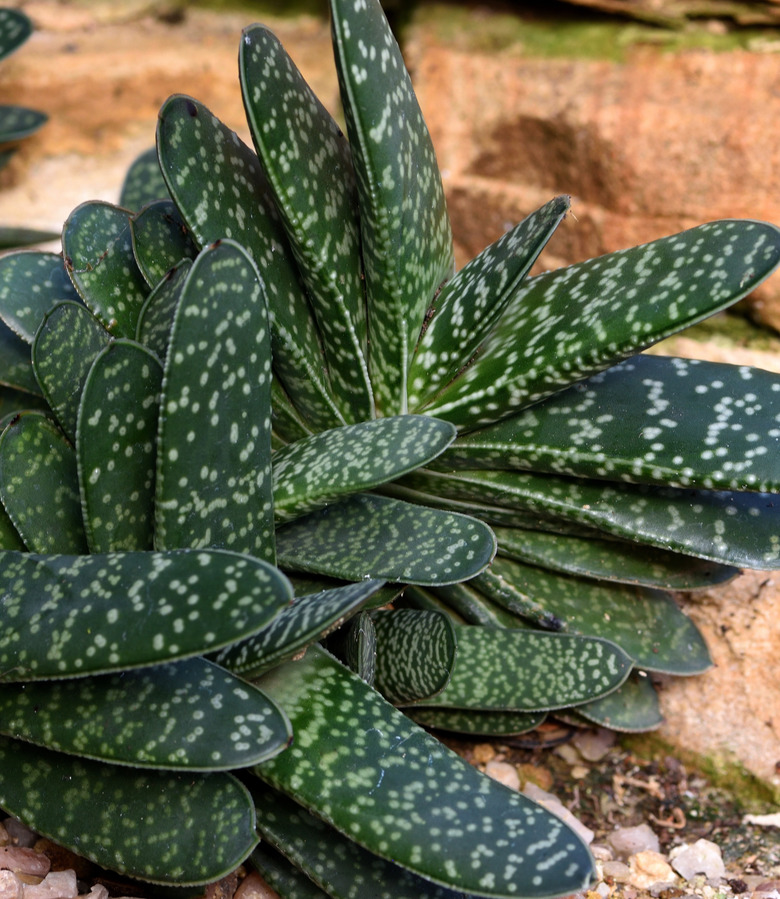The 7 Best Succulents For Beginners
We may receive a commission on purchases made from links.
If you're new to the succulent trend, but eager to get started on your very own terrarium or even plotting out your own desert garden, consider starting with a few easy succulents for beginners. Succulents are easier to care for than other houseplants because they need very little water and most grow slowly and don't need fertilization. It's still important to pick the right plants, however, as some are far pickier about their growing conditions than others.
Here are the seven best succulents for beginners (we promise you can keep these alive):
1. The Panda Plant
1. The Panda Plant
If you want an easy-to-care-for plant that stands out in a crowd, consider a panda plant (Kalanchoe tomentosa, USDA zones 9-11). Reaching a maximum height of only about 18 inches, the panda plant doesn't need anything except the right light and occasional watering.
The plant features small, oval leaves that are covered in tiny silver hairs. These fuzzy leaves are unique and soft to the touch, making the panda plant an interesting one to add to your collection. The panda plant also produces tubular green flowers, but most don't when grown indoors. You can improve the odds of flowering by placing your plant outdoors in the spring and summer.
Place your panda plant where the temperature stays between 60 and 75 degrees Fahrenheit. Because its hardiness zone range is only in the warm climates of USDA zones 9-11, most grow it as a houseplant. Panda plants like bright, direct sunlight in the morning. Too much direct light in the afternoon, however, can burn their delicate leaves.
Panda plant leaves rot quickly when they're wet, so water your plant from the bottom. Set it in a dish of water and allow the plant to soak up the water through the drainage holes in the bottom of the pot. When the soil is thoroughly saturated, remove the plant from the water and allow it to drain. Don't water again until the soil around the plant is completely dry.
2. Hens and Chicks
2. Hens and Chicks
There are many different varieties of hens and chicks (Sempervivum tectorum, zones 3-8), and all are quite beautiful. Available in various hues of green, red and purple, the leaves of these plants grow in such a way that they resemble the petals of a rose.
Hens and chicks stay quite short, reaching only about 4 inches in height. They will spread out, however, with the "mother hen" plant growing new plants, or chicks, around it. You can leave these alone or remove and transplant them to make more plants.
Like the panda plant, hens and chicks are excellent succulents for beginners because they demand very little attention. Give them a deep watering every two weeks and set them where they will get lots of bright sunlight in the morning. Although they prefer full sun and temperatures between 60 and 75 degrees, hens and chicks are pretty forgiving, and they'll also handle part shade.
3. Living Stones
3. Living Stones
If you want a plant that looks impressive but grows easily, consider getting a living stones plant (Lithops spp., zones 10-11) As their name implies, living stones grow about 3 inches tall and are shaped like rocks and stones. They come in tan, pink, orange, blue, and green hues, and their unique shape and color make a great conversation starter.
Living stones require very little water, so only water them when the soil is completely dry all the way through the pot. Withhold water during the winter and resume in the spring when the outer leaves have shriveled and grown paper-thin. Set them on a windowsill or in a sunroom where they will receive lots of full sun. Like most succulents, living stones really don't require fertilizer and do best in cactus soil.
4. Ladyfinger Cactus
4. Ladyfinger Cactus
Fancy and funky succulents are undeniably fun, but sometimes, you just want a good old-fashioned cactus. If you do, the ladyfinger cactus (Mammillaria elongata, zones 9-11) is an excellent choice for new succulent growers. Growing 6 to 8 inches tall, the ladyfinger is a cylindrical cactus with spikes arranged in attractive starburst patterns around the plant. It also produces tiny white, pink, and pale-yellow flowers.
The ladyfinger cactus likes lots of direct sunlight and needs water only when completely dry. Although easy to grow, the ladyfinger is pretty fussy about its soil. Make sure the cactus potting mix in which you grow it is 70 to 80 percent grit so that it drains quickly. The ladyfinger also dislikes cold weather and grows best as an indoor plant in most of the United States.
5. The Zebra Plant
5. The Zebra Plant
Practically thriving on neglect, the zebra plant (Haworthioptis fasciata, zones 10-11) is an excellent choice for new container gardeners. The plant looks much like an aloe vera except that it has horizontal white stripes running through the leaves. The plant requires only four hours of bright, indirect sunlight per day, making it an excellent houseplant. A zebra plant with purple, red, or brown hues in its leaves is getting too much direct light.
The zebra plant prefers a very deep watering followed by a period of no water. Only water when the soil is thoroughly dry. A zebra plant will do better with too little water than it will with too much, so skip the watering if you have any doubts.
The room temperature in your house during the spring and summer will suit your zebra plant well. Zebras do, however, like a little bit of a temperature dip in the winter, so don't worry if yours is sitting in a cool room or next to a chilly window. As long as the temperature doesn't drop below 40 degrees, your zebra plant will be just fine.
6. Snake Plant
6. Snake Plant
Although it rarely flowers indoors, snake plant (Dracaena trifasciata, zones 10-12) is an attractive and popular succulent that features vertical evergreen foliage. The snake plant also grows quite tall, reaching up to 4 feet in height. To make sure this tall beauty doesn't topple over, gardeners frequently grow it in pots that are broader than they are tall to form a sturdy base.
Snake plant is one of the most adaptable succulents you can grow. It prefers lots of bright light but will tolerate partial shade. If you move the plant outdoors in the summer, make sure you keep it in a partially shaded spot to avoid sunburn on the leaves.
Snake plant needs very little water in the winter but regular waterings during the spring and fall. You should wait until the soil dries out to water it, but this plant is a bit more forgiving of overwatering than many other succulents. When watering this plant, pour the water next to the plant's base; don't pour it into the rosette at the bottom of the leaves.
7. Ox Tongue
7. Ox Tongue
Frequently called lawyer's or ox tongue due to the shape of the leaves, gasteria plants (Gasteria obliqua, zones 10-12) are super easy to grow and make one of the best succulents for beginners. Gasteria grows about 6 inches high and pairs well as a companion plant to the zebra plant, which has very similar care requirements. It looks slightly like a miniature version of snake plant.
Gasteria leaves grow in a slight arch shape and are generally green with white spots. In the winter and spring, gasteria plants often sprout long stems from which tubular green, orange, pink and red flowers hang.
These attractive succulents require lots of bright but indirect sunlight and thrive in indoor growing conditions. As is often true with succulents, a bit of a cool-down in the winter will benefit the plant as long as the temperature stays above 50 degrees.
You should water your gasteria only when the soil is completely dry. During the winter months, you may need to water only once a month or even less. Like snake plant, apply water next to and around your plant but avoid getting water between the plant's leaves.
